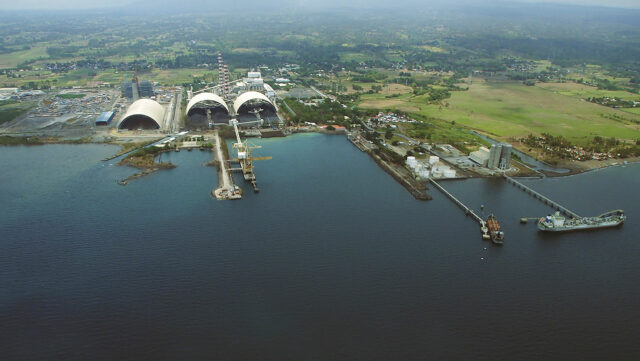Sex worker drama Anora claims top prizes at Academy Awards

ANORA, the story of a sex worker who gets a chance at a new life when she marries a wealthy client on a whim, won five Academy Awards on Sunday, including the coveted best picture Oscar.
The movie’s 25-year-old star, Mikey Madison, was named best actress. The film also won best director for Sean Baker and trophies for original screenplay and editing.
Ms. Madison scored an upset over Demi Moore, who had been favored to win best actress for her role in The Substance.
“I grew up in Los Angeles, but Hollywood always felt so far away from me,” Ms. Madison said on stage. “To be here standing in this room today is really incredible.”
She said she wanted to “thank and honor the sex worker community.” She said, “I will continue to be an ally.”
Her Anora role also earned Ms. Madison best actress honors at the Independent Spirit Awards and Britain’s BAFTAs.
Anora director Sean Baker had been favored to win the directing award, having collected top honors from the Directors Guild of America and the Producers Guild of America, and the directing award at the Film Independent Spirit Awards.
Anora emerged as the winner in an unpredictable Oscars race that included papal thriller Conclave, Jewish immigrant story The Brutalist, and blockbuster musical Wicked.
Adrien Brody claimed his second Academy Award, winning the best actor trophy for his role as a Jewish immigrant and architect who chases the American dream in The Brutalist.
The 51-year-old New York City native had previously won for The Pianist, when he became the youngest best actor winner at age 29. Mr. Brody joins an elite group of multiple winners in this category that includes Daniel Day-Lewis, Tom Hanks, Anthony Hopkins, Jack Nicholson, and Spencer Tracy.
Mr. Brody has said his mother escaped from Hungary and moved across the Atlantic, echoing the journey of the character he plays, a modernist architect named Laszlo Toth.
“I understand a great deal about the repercussions of that on her life and her work as an artist,” he told reporters at the Venice Film Festival. Mr. Brody’s mother is the celebrated photographer Sylvia Plachy.
Zoe Saldaña was named best supporting actress for her role as the fixer for a Mexican drug lord in the Spanish-language Netflix musical Emilia Pérez.
Speaking through tears, Ms. Saldaña said her grandmother had come to the United States in 1961 and would be thrilled to see her win for a role in which she sings and speaks in Spanish. “I am a proud child of immigrant parents with dreams and dignity and hard-working hands,” she said.
Kieran Culkin, who started acting as a child, received the best supporting actor award for playing one of two cousins who travel to Poland to study their family’s roots in A Real Pain. “I have no idea how I got here,” Mr. Culkin said. “I’ve been acting all my life. I never felt like this was my trajectory.”
Winners of the gold Oscar statuettes are chosen by the roughly 11,000 actors, producers, directors and film craftspeople who make up the Academy of Motion Picture Arts and Sciences.
ISRAELI-PALESTINIAN DOCUMENTARY A WINNER
No Other Land, a film showing the alliance that develops between a Palestinian activist Basel Adra and an Israeli journalist Yuval Abraham amid their peoples’ conflict on the occupied West Bank, won the documentary feature film Oscar.
The two jointly accepted the award. Mr. Adra said: “No Other Land reflects the harsh reality that we have been enduring for decades and still resist as we call on the world to take serious actions to stop the injustice and to stop the ethnic cleansing of the Palestinian people.”
Mr. Abraham said they made the film because together their voices were stronger. “We see each other, the atrocious destruction of Gaza and its people which must end, the Israeli hostages brutally taken in the crime of Oct. 7 which must be freed.
“When I look at Basel I see my brother but we are unequal. We live in a regime where I am free under civilian law and Basel is under military law that destroys his life and he cannot control.
The prize for best animated feature went to independent film Flow, the first movie from Latvia to win an Oscar.
Brazilian drama I’m Still Here, about a matriarch whose husband is taken away by the military regime that ruled the country in the 1970s, won the Academy Award for best international feature film.
The film tells the true story of Eunice Paiva’s struggle to uncover the truth about her husband’s forced disappearance in 1971. It was directed by Walter Salles, whose 1998 film Central Station was also nominated for best foreign film, as the category was then known.
Nominees Ariana Grande and Cynthia Erivo opened the show with a Wizard of Oz-themed medley including the showstopping hit “Defying Gravity” from their film Wicked.
Timothée Chalamet who was wearing a canary yellow tuxedo, received a jab from the Oscars host, comedian Conan O’Brien. “You will not get hit on your bike tonight,” Mr. O’Brien said.
Mr. O’Brien also threatened any winners who spoke too long that he would show their old headshots or cut to a shot of actor John Lithgow “looking slightly disappointed.”
Midway through the show, Mr. O’Brien brought a group of Los Angeles firefighters to the stage and thanked them for their work during the January wildfires. He also invited them to deliver a few jokes.
“It’s great to be back with Conan,” said Pasadena Fire Captain Jodi Slicker. “Usually when he calls, he’s stuck in a tree.” — Reuters
And the winner is…
THE full list of Oscar winners at Sunday’s 97th Academy Awards.
Best Picture – Anora
Best Director – Sean Baker, Anora
Best Actor – Adrien Brody, The Brutalist
Best Actress – Mikey Madison, Anora
Best Supporting Actor – Kieran Culkin, A Real Pain
Best Supporting Actress – Zoe Saldaña, Emilia Pérez
Best Original Screenplay – Anora
Best Adapted Screenplay – Conclave
Best Animated Feature Film – Flow
Best Animated Short Film – In the Shadow of the Cypress
Best International Feature – I’m Still Here, Brazil
Best Documentary Feature – No Other Land
Best Documentary Short – The Only Girl in the Orchestra
Best Original Score – The Brutalist
Best Original Song – “El Mal” from Emilia Pérez
Best Sound – Dune: Part Two
Best Production Design – Wicked
Best Live Action Short Film – I’m Not a Robot
Best Cinematography – The Brutalist
Best Makeup and Hairstyling – The Substance
Best Costume Design – Wicked
Best Visual Effects – Dune: Part Two
Best Film Editing – Anora











